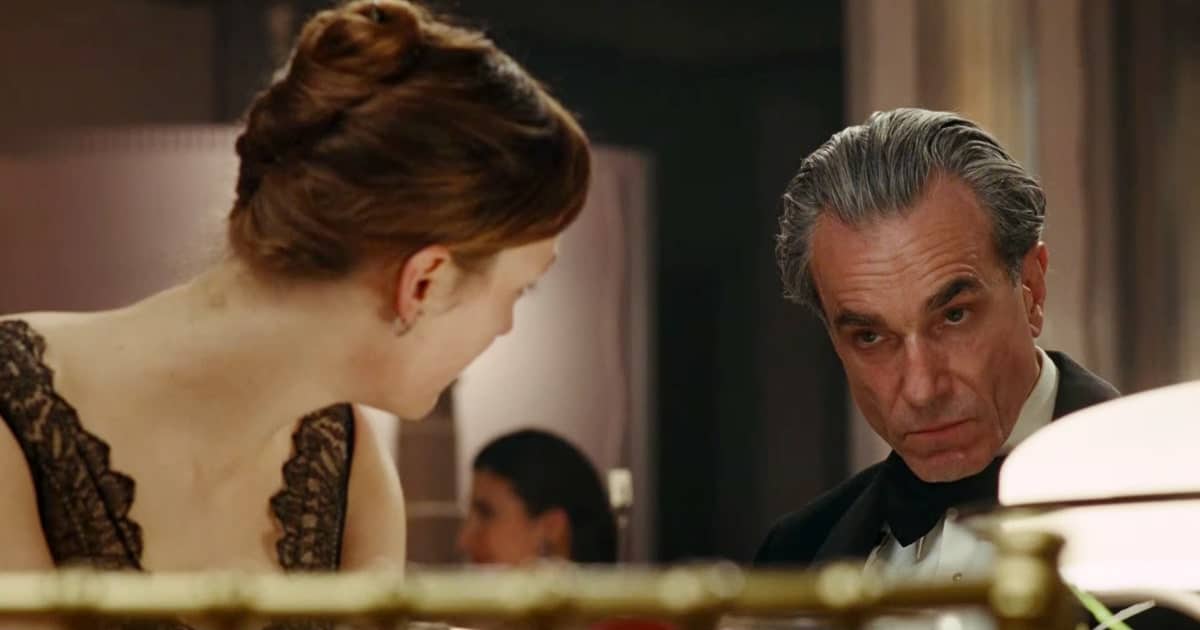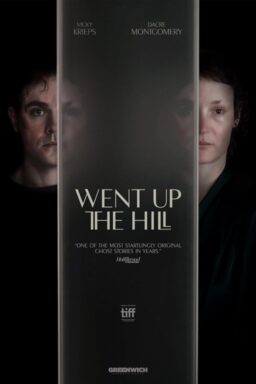This feature is a part of a series on the best films of the 2010s, resulting from our ranked top 25, which you can read here. This is #5.
If the 2010s did anything from a cinematic perspective, they proved conclusively—not that there was much doubt—that Paul Thomas Anderson deserved a position of prominence as one of the greatest American filmmakers of his era. He began the decade with “The Master” (2012), his spellbinding account of a confused and uncertain war veteran (Joaquin Phoenix) who falls under the spell of a mysterious cult and its charismatic leader (Philip Seymour Hoffman) and followed that up with “Inherent Vice” (2014), a cheerfully crackpot ‘70s-era mystery in which he managed to brilliantly transfer the singular writing style of Thomas Pynchon into cinematic terms. For most directors, a film along the lines of either one of those would be considered a career highpoint. But in Anderson’s case, they were merely prelude for what proved to be his crowning work of the decade and possibly of his career to date: “Phantom Thread.”
Set in 1955, the film is centered on Reynolds Woodcock (Daniel Day-Lewis), a top-notch designer of couture fashion with a reputation as formidable as his name. Over the years, he has become known as a perfectionist, one so dedicated to his craft that even the slightest variation of his routine would be absolutely unbearable to him and his creative genius. Cyril (Leslie Manville), his sister and only close confidant, anticipates all of his myriad needs (sometimes before even he realizes he needs them), commandeers the small army of cutters and seamstresses who come to his vast London townhouse every day to help execute his designs, and even breaks up with the latest woman he has briefly allowed into his life—whatever it takes to allow Reynolds to concentrate fully on his work.
During a brief respite into the country, Reynolds stops at a remote seaside hotel for breakfast and that is where he meets Alma (Vicky Krieps), his waitress. At first glance, she seems relatively shy and unassuming, but something about her—perhaps her quiet beauty, or the way she is completely unfazed while taking down his insanely complicated order—captures his attention. He asks her out on a date that ends with him bringing her back to his place to get her into his clothes—a fitting attended by Cyril—and before long, she has been installed in the House of Woodcock as his latest muse. This is not a traditional relationship by any means—she is put into a separate bedroom and barred from entering Reynolds’ space, though Cyril has full admittance—and her unintentional upending of the usual routine starts to drive him up the wall. Cyril suspects that the writing is on the wall for the newcomer, but what neither she nor Reynolds realizes is that Alma truly loves the guy, despite his less-than-admirable qualities, and decides to make a stand to make him love her back. She proves to be as unyielding in her own way as Reynolds. Alma goes to jaw-dropping lengths to prove both her love for him and his love for her.

Repeated viewings of “Phantom Thread” have only served to reveal just how brilliantly Anderson directs his film. On the surface, it appears to be a variation of what used to be referred to as a “woman’s film” and movie buffs will be able to detect hints and homages to films running the gamut from Alfred Hitchcock’s “Rebecca” to “Celebration,” Olivier Meyrou’s long-suppressed 2007 documentary that observed Yves Saint Laurent during the preparation of what would be his final collection in 1998. And yet, in much the same way that Reynolds sews tiny messages in his creations that go overlooked by those not looking beyond the dazzling surface, to peer beyond the stunning cinematography (handled by Anderson himself) and Mark Bridges’ Oscar-winning costumes is to reveal a work that is far stranger than expected and ultimately all the more rewarding because of it.
The relationship between Reynolds and Alma changes and evolves. When Alma first enters the scene, it seems that she will be no match for him, but she recognizes that he is not so much a cruel person as she is one who is trapped by his own long-standing emotional limitations. She becomes determined to set him free from those limitations, even if to do so might threaten the very existence of the House of Woodcock. For his part, although he does treat her quite shabbily, he does have a certain admiration for her willingness to stand up to his shit, which helps to lend additional power to the knockout conclusion. Likewise, Anderson himself has too much respect for his characters to let them simply sacrifice all of their individual quirks in order to foster a typical happy ending, electing instead to negotiate their ultimate union in a way that comes across as far more honest and forthright than the typical movie romance.
One of the film’s most surprising elements is just how funny it can be, even though none of the advanced word suggested that it contained any laughs at all. Of course, when one builds an entire movie around a character with a name like Reynolds Woodcock, one has to expect a certain amount of silliness, and that is certainly the case here. In the funniest sequence, Reynolds is commissioned to create a dress to be worn by a wealthy and fairly vulgar woman at her wedding to a Latin playboy—a union that, to judge by the looks of those in attendance, appears doomed before it has begun. As part of the deal, Reynolds is inveigled to attend the ceremony—mostly so that the bride can show him off—and he in turn brings Alma along. As the proceedings go on, the bride gets drunk and obnoxious to the point where Alma is offended—how dare someone act so poorly while dressed in a Reynolds Woodcock original? The two conspire to take back the dress for themselves in a highly amusing manner that also leads to a rare exchange of genuine passion between the two that shows there really is something between them after all.

In at least one aspect, however, “Phantom Thread” has proven to be even more resonant today than it did when it first came out. In many ways, the film is an indictment of white male privilege, toxic masculinity and how certain people (almost always white men) are allowed to indulge in a staggering amount of bad behavior and get away with it because they have wealth, power and/or prestige working for them. Anderson touched on these themes in earlier films like “There Will Be Blood” and “The Master”—narratives about demanding men who imposed their will on others under the assumption that those with money and power are inherently better those without and deserve to be treated differently. Like the characters in those movies, Reynolds is obsessed with his work and is willing to mistreat the woman in his life in the name of that work, confident that he will never have to answer for his behavior. In his eyes, Alma is his muse and can be pushed aside as soon as he is done getting what he needs from her. What Anderson elects to show here is what happens when such a woman decides that she wants more than to simply be an inspiration for someone else’s greatness, and is willing to turn the system upside down in order to achieve some kind of parity.
When the film came out, much of the focus revolved around the fact that Day-Lewis claimed that it would mark his last film appearance. If it holds, Day-Lewis can be said to have gone out with what may be the best performance of his entire career, an absolutely mesmerizing turn that is all the better for not needing to rely on the various props, costumes and vocal tics/stylings that he has utilized to help put forth some of his most noteworthy previous turns. That said, his is hardly the only great piece of acting in the film. As Cyril, Leslie Manville is both quietly terrifying and oddly sympathetic in her portrayal of someone who has essentially dedicated her entire life to making someone else’s run more smoothly.
The big surprise, however, was the simply extraordinary turn by the relatively unknown Vicky Krieps as Alma. In virtually every one of her scenes, she goes up against one of the most highly regarded actors on the planet and more than holds her own in the process. At first, she is undeniably sweet and charming. But as the film progresses, both she and her character begin to reveal unsuspected depths and hidden strengths that make her all the more compelling, especially once it becomes clear that she is capable of doing just about anything to get her way, something she demonstrates fully in the finale.
Ah yes, the ending. Thanks to the combination of Anderson’s exquisite formal and narrative skills and the performances by his actors, what might have come across as little more than a weirdo joke not only becomes one of the most unforgettable endings in recent film history, it feels like the only logical conclusion. It is so bizarre and without precedent that, like the film as a whole, you won’t know whether to shudder, laugh, or applaud Anderson for having the audacity to conceive of it all in the first place. The proper answer, of course, is all three.












